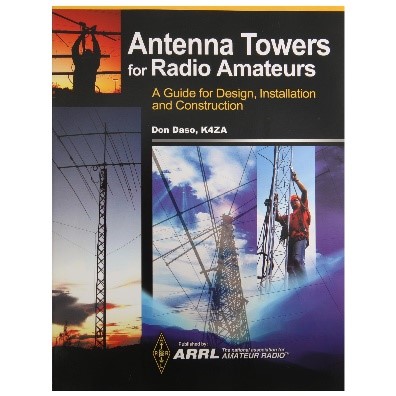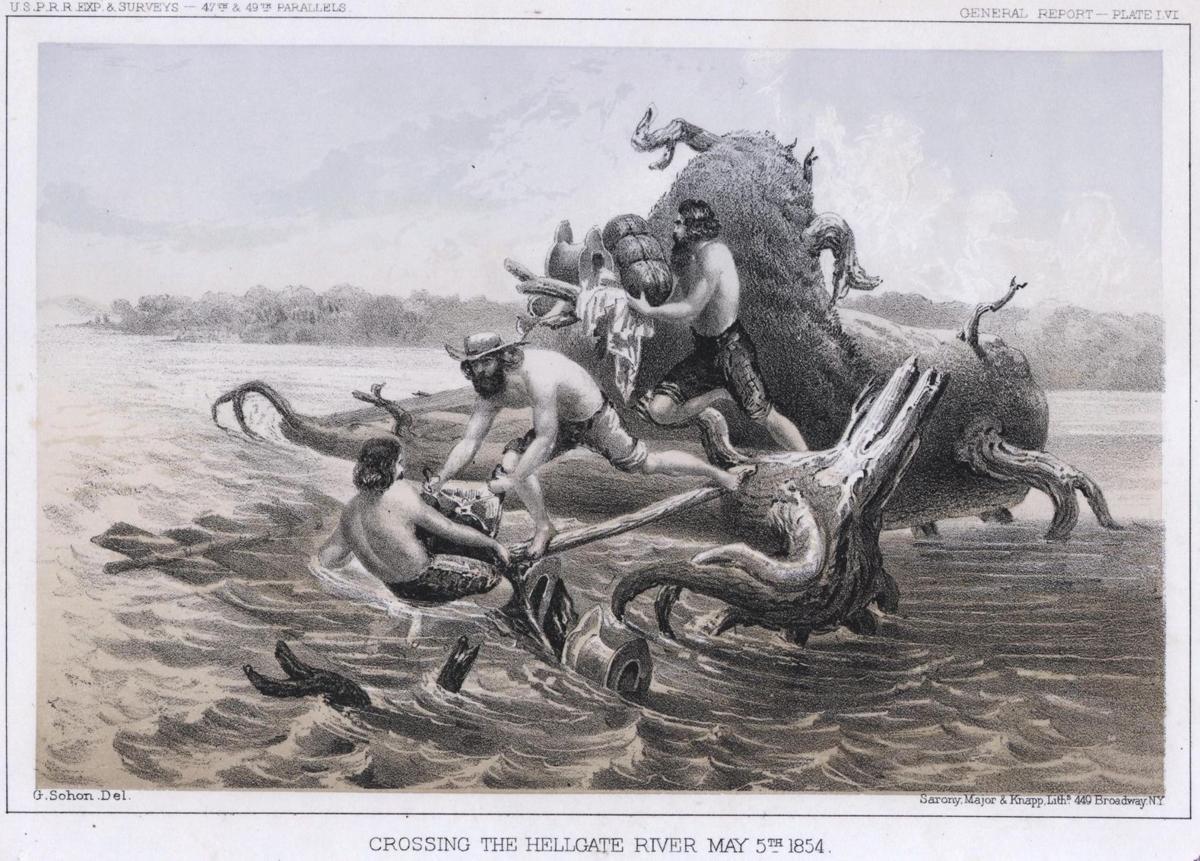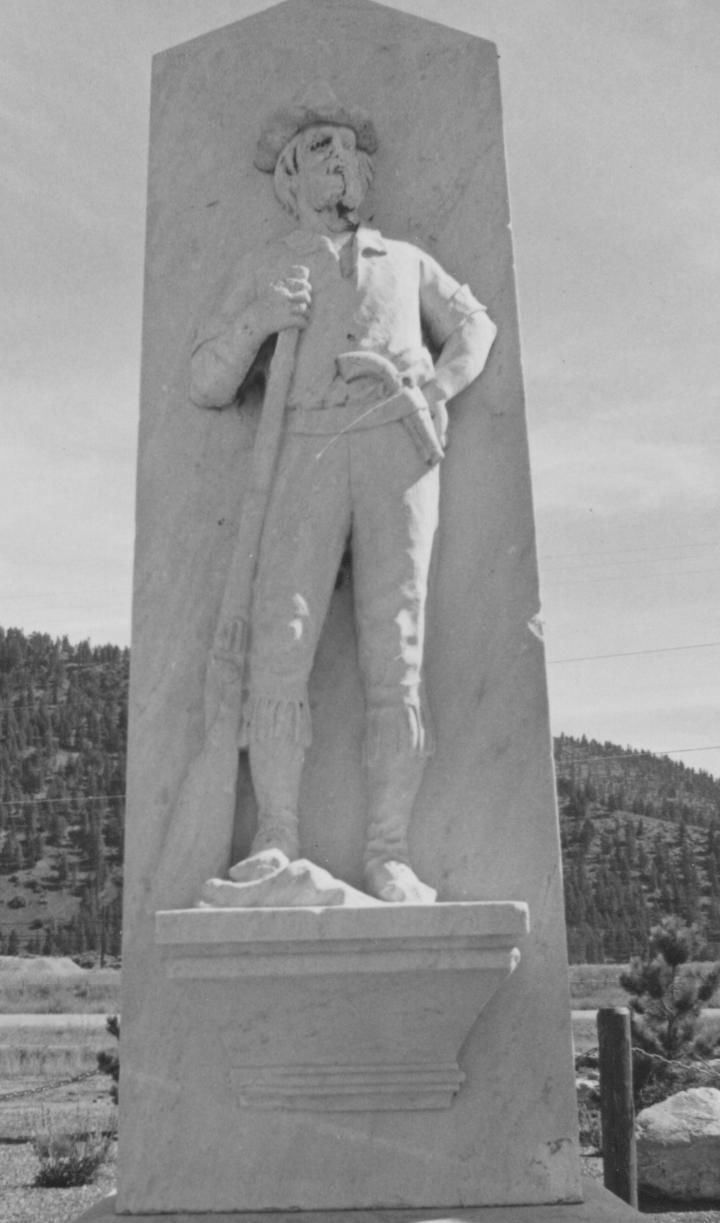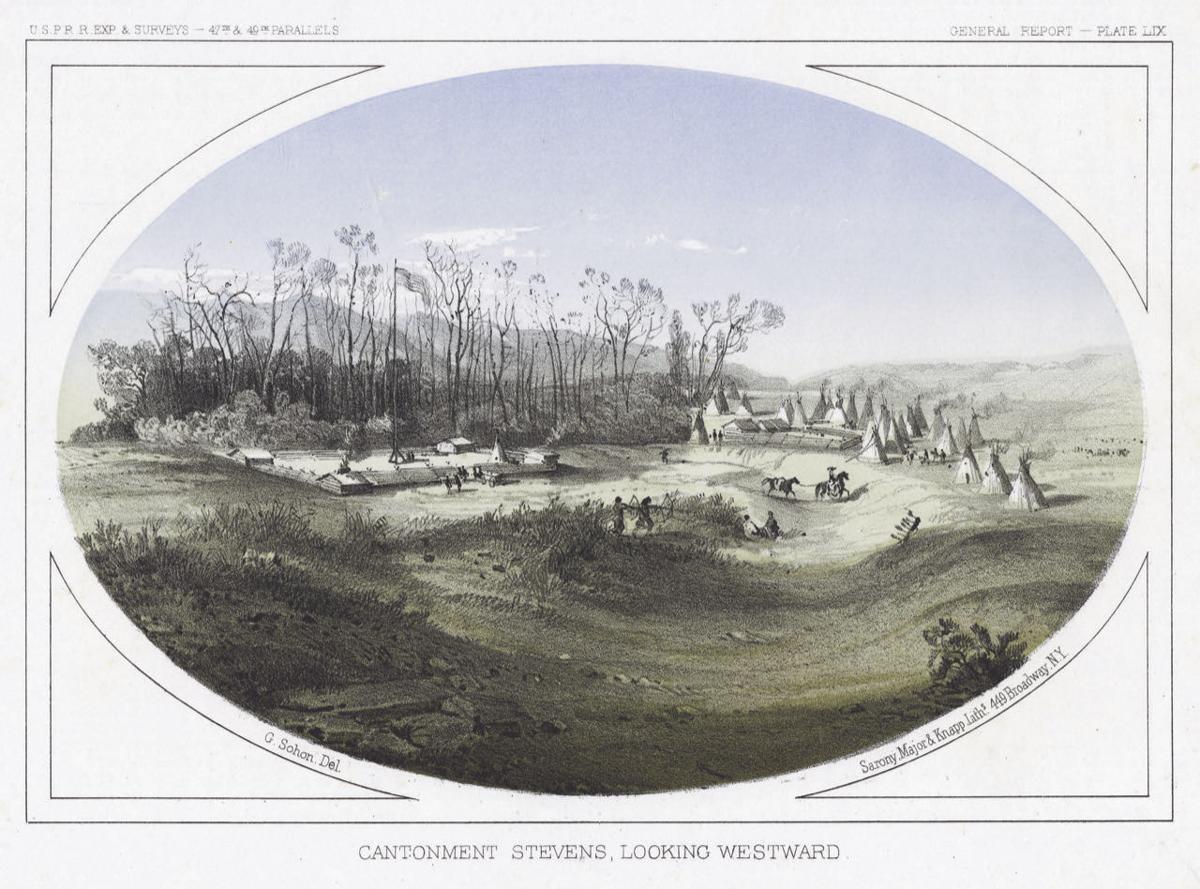"Summits On The Air" with W7MRC, Amateur Radio, Rhodesian Ridgebacks, Field Craft, Living in Montana, Old 4 Wheel Drivers, Mountain Bikes, Hiking and "Just Getting There"
Saturday, August 29, 2020
Friday, August 28, 2020
The Case for Capitalism, Part III August 28, 2020 by Dan Mitchell
Part I of this series featured Dan Hannan explaining how the emergence of capitalism led to mass prosperity, while Part II featured Madeline Grant explaining how competition and cooperation make markets so successful.
Today, in Part III, Andy Puzder compares capitalism with socialism.
The core theoretical argument in the video is that capitalism is based on serving the needs of consumers.
As captured by one of my favorite quotes from Professor Walter Williams,  you only make yourself better off in a free market system by serving others.
you only make yourself better off in a free market system by serving others.
In a socialist system, by contrast, the only people who get rich are the government elites who plunder the people.
I also like that the video explains that Nordic nations are not socialist. As I’ve also pointed out, there’s no government ownership, central planning, and price controls in nations such as Sweden and Denmark.
Those countries do have higher tax burdens and more costly welfare states, which is the main reason they generally rank below the United States in measures of national economic liberty.
More important, the larger fiscal burden in Scandinavia help to explain why Americans enjoy higher living standards.
Indeed, my one complaint about the above video is that it didn’t show any of the data about relative levels of prosperity.
Yes, I want people to understand that Nordic nations have market-based economies, but I also want them to understand that those countries could be significantly more prosperous with less-onerous fiscal policy.
The most powerful data in that regards comes from a Swedish researcher who put together data showing that Americans of Scandinavian descent are much richer than their counterparts who are still in Scandinavia.
So the moral of the story is not only that capitalism is better than socialism, but also that capitalist nations with medium-sized governments do better than capitalist nations with large-sized governments.
P.S. Needless to say, capitalist jurisdictions with small-sized government do best of all.
The Case for Capitalism, Part II August 24, 2020 by Dan Mitchell
Yesterday, in Part I of this series, we enjoyed a video from the U.K.-based Centre for Economic Education, about how capitalism lifted the world from deprivation and oppression (also see videos by Don Boudreaux and Deirdre McCloskey).
Today, in Part II of the Case for Capitalism, here’s a video from CEE that explains how markets provide you a cup of coffee.
An obvious takeaway from the video is that consumers benefit from global markets, which hopefully helps to explain why free trade is desirable.
But there are four other messages that are even more widely applicable.
- Capitalism is based on competition, but also should be understood as a system of cooperation.
- Voluntary exchange means that both buyers and sellers expect to benefit from a transaction.
- Prices should be set by unfettered markets rather than politicians, regulators, or bureaucrats.
- Our prosperity is a result of the invisible hand (spontaneous order) rather than central planning.
In other words, the growth-producing concept of classical liberalism (as opposed to the statist version of liberalism that now exists in the United States).
All of which reminds me of this observation by Joseph Schumpeter, an influential economist from the Austrian School.
This quote isn’t as famous as what he said about creative destruction, but it deserves to be highlighted since it succinctly explains how capitalism is the system that delivers big benefits for ordinary people.
P.S. The degree to which nations enjoy convergence (or divergence) is generally a consequence of whether they allow free markets and limited government.
Mount Bachelor, OR Submitted by K7FOP
I went to Bend to visit my in-laws over the weekend and had time for one summit. Figured I would get my monies worth and go for a ten pointer I knew I could activate, Mount Bachelor.
I activated Mount Bachelor in 2018. For that activation I took the lift to the Pine Marten Lodge and hiked to the summit from there. I told myself the next time I activated this one I would start my hike from the bottom.
According to the Mount Bachelor website hiking from the Sunrise base area is no longer permitted. Hikers should start their hike from West Village and use the new trail. So that's what I did. I met others on the trail that did start from the Sunrise base area. YMMV.
The trail is pretty easy to follow. There were lots of signs. Signs are not on the whole trail but it will be obvious. Hiking footwear and poles recommended. Be careful climbing the lava rock on your way up.
My Garmin read 8.4 miles roundtrip. 2,763 ft gain. Most of the gain comes in the last 1.5 mile or so on your way up.
I plan to do this hike again next year. Maybe it will get easier the 3rd time.
Troubleshooting Antenna Systems Posted by Ward Silver, N0AX
After the previous couple of articles about troubleshooting (“Maintaining and Troubleshooting an HF Station” and “Troubleshooting Your Transceiver”), it’s time to move outside the station. An antenna system may not have a lot of moving parts or complicated electronics, but it’s a critical part of your station, and exposure to sunlight, precipitation, and wind can cause problems. Let’s check it out…
How Do You Know It’s the Antenna System?
If you think you have a problem, how do you know it’s in the antenna system? By antenna system, I mean everything from the feed line connector on the back of your radio all the way to where the radio waves leave your antenna. Good troubleshooting technique means carefully checking each piece of equipment to be sure it’s functioning correctly before assuming something else is at fault. So before we move on, confirm that your transceiver…
- Transmits OK connected to a dummy load with a known-good coax jumper
- Receives signal with a temporary antenna or piece of wire connected
- Is configured to use the “right” antenna
Further, make sure any software that controls antenna system functions is configured and running OK.
It’s funny how often just checking those basic functions turns up a simple problem disguised as a “bad antenna.” In the words of Homer Simpson, “Doh!” So double-check everything one last time.
You might want to review the operation of your antennas and equipment, like tuners and switches, as well. Commercial models will come with a user’s manual and, for equipment, a schematic. Be sure you know how the equipment is supposed to work and that you’re using it correctly before assuming there is a problem. (I once caused myself a lot of grief by assuming a “Bypass” function worked in a way it really didn’t…then I read the manual!) The whole point is to be sure you really know what you think you know before starting the process. If you have a recent edition of the ARRL Antenna Book, there is a whole chapter on troubleshooting and maintenance with helpful tips.

Describe the Problem
Are you sure you have a clear understanding of what the problem is? Some are simple (infinite SWR on all bands) and some are subtle (minimum SWR on 15 meters is 200 kHz too high). Some are always there but others might change with time (SWR increases after a few minutes of operation) or come and go (SWR jumps to infinite occasionally). Try to capture any clues associated with the problem.
Now, write it down! Take careful measurements, like an SWR sweep on the troublesome band, or record what symptoms you notice when the problem is present. If you have measurements from before the problem appeared, review those. If possible problems come to mind, write them down as well, but try not to jump to conclusions—you can waste a lot of time chasing a problem that doesn’t exist.
Get Your Test Equipment Ready
Now it’s time to collect all the necessary “stuff” needed to troubleshoot your “stuff.” The best gadget ever invented for Ham radio antenna system work is the antenna analyzer. Since you can’t see radio waves interacting with your antenna, measuring impedance either at the feed point or through a feed line is pretty much your only option.

An SWR bridge will do if you don’t have anything else, but an analyzer gives you so much more information and doesn’t require transmitting a signal on the air. The new handheld models, like the RigExpert line, will not only measure the impedance at different frequencies but graph it for you while taking the measurement. This makes tuning up a matching network easy and gives you a good picture into frequency-related behavior, which is very important in testing and troubleshooting. Some analyzers will record and save the data as a downloadable file for you to work with on a PC. Most manufacturers also offer a protective carry pouch for use in the field, or you can choose a case specifically paired with the analyzer model.
What Other Equipment and Tools?
- A lightweight voltmeter—check the battery! (Write down your rotator’s normal terminal-to-terminal resistances for checking at the rotator.)
- A known-good coax jumper (3 to 10 feet) and a couple of PL-258 “barrel” connectors to bypass a piece of equipment
- Two pairs of slip-jaw pliers to tighten or loosen screw-on connectors like PL-259s, and a small adjustable wrench
- Phillips and flat-blade screwdrivers
- A small steel or brass bristle brush for removing dirt or corrosion
- Ratchet and 7/16″, 1/2″, and 5/8″ deep-well sockets for U-bolts and mast clamps
- A utility knife and good quality electrical tape to remove or replace waterproofing
- A small measuring tape to check lengths
- A small tube of anti-oxidation compound like Penetrox and a shop rag to get it off your fingers

All of this will fit comfortably in a belt-mounted tool pouch. I leave most of this in a spare tool bag ready to go and do a quick checklist count before heading outside. Even if you don’t think you need some of this for the problem at hand, you can check other things or fix problems you notice while working.
Take a Good Look
Before getting into electrical measurements, it’s time for a “walk-through” inspection. Start at the back of your transceiver and work your way along the feed lines. Check that connectors are tightly attached to the equipment and that the coax is properly installed in them. There should be no corrosion or moisture inside the connector at all. Check carefully at any feed-through to outside the building. Condensation can form on either side of the connector due to temperature differences, and it can work its way inside connectors or corrode the point of contact between the connector and any metal panels or enclosures.
Unscrew the shell of soldered PL-259s so you can see the soldered connection—they ARE soldered, aren’t they? For crimped connectors, be sure the crimp is tight and holds the braid tightly in place. It’s helpful to have the receiver on and turned up so you can hear the telltale crackle of a loose connection when you wiggle a feed line or connector.
If everything inside is ship-shape, head outside and take a good look. A small pair of binoculars makes inspecting from ground level a lot easier. Are ropes and other supports as they should be? Look for weather-related damage, especially if there was severe weather before the problem appeared. Has anything sagged or drooped? Is something touching an antenna like a branch or wire? Inspect feed line connections carefully, making sure connectors are tight, clean, and dry—whether coax or open-wire line. This would be a good time to look for chafing damage where a rope goes over a branch or where a feed line wraps around a rotating mast.
While tower inspection and maintenance are beyond the scope of this article, any Ham with a tower should perform regular inspections to avoid problems. Two great books are available, each with a full chapter on what to look for and how to maintain a tower system: Antenna Towers for Radio Amateurs by Don Daso, K4ZA, and Up the Tower, by Steve Morris, K7LXC. Both are good to have before you start to climb.


For wire antennas, look for signs of mechanical stress or repeated flexing wherever the wire is secured to a support, insulator, or feed line. A center or in-line insulator supporting a heavy feed line puts stress on the feed line and the connections to the antenna. Check the waterproofing at the end of a coaxial feed line if pigtails are used to connect it to the antenna.
Help from a Friend
Having someone to give you a hand can be very helpful when checking antennas, particularly if they also have a Ham license and understand what you’re looking for and measuring. After all, the antennas are “out there” while your equipment is mostly “in there.” It’s hard to wiggle or turn something and then run back inside to see if that affects the antenna! A friend can provide helpful and alternative suggestions, too. Have them bring a handheld radio to coordinate tests and measurements.
Start from Either End
Everything looks OK but check that problem one more time. Still there? OK, get out the antenna analyzer. I’m assuming you own or have borrowed one, whether it is the analog meter type or one with a digital display. The process is straightforward: Disconnect the feed line from equipment and reconnect it to the analyzer. Take your measurement. If the impedance is as you expect, reconnect the feed line and move to the next connection in the system.
Let’s say you have a wire dipole. You lowered it and all of the mechanical details look OK, including the feed line connection at the feed point. Measure impedance at the closest point to the antenna where you can connect the analyzer. If impedance is OK, reconnect the cable and move to the next farther point in the system where you can measure SWR. Don’t re-waterproof any connections until you are done working—write down which connections will need to be waterproofed so you don’t forget later. Keep going until you get to a point where the problem appears. The cause is between the current and previous point of testing, whether it is in a cable, connector, or piece of equipment.
Intermittent problems are often a defective mechanical connection or something rubbing on or too close to an antenna. Assuming the close-up visual inspection was OK, with the antenna in place, tap on the antenna or wiggle the support while watching (or having your friend watch) the analyzer for jumpy readings. Gradually work your way back toward the measuring point until you find something loose or erratic. Remember that even with power as low as 100 watts, there are high voltages on antennas that can arc to nearby leaves or branches.
Problems that show up only after you’ve been transmitting for a while are usually a burned or oxidized contact in a connector, switch, or relay. Water in a connector can also create that “SWR-goes-up-after-I-transmit-for-a-while” symptom. A “dead” antenna that comes back to life after a quick “dit” or short transmission often has a bad relay or switch contact somewhere in the line. The short pulse of current is enough to punch through any film of corrosion or oxidation for a while. Another possible problem is a balun or impedance transformer with a core that has been overheated or cracked. These are often sealed, making internal inspection difficult, but you can put a resistor or dummy load across their output terminals and make impedance checks that way. A cracked core will often make rattling noises when the housing is shaken.
After the Problem is Found
Once you have solved the problem, re-waterproofed the connections, tightened the bolts, and put the equipment back in place, now it’s time to write down what you’ve learned. Note what the problem was and how you repaired it, anything special about the repair, tools you wish you’d had or supplies you need to replace, and suggestions for future installations. These stories make great articles in club newsletters and help others learn from your experiences. And finally, take a complete set of measurements so you can tell what “normal” is for next time!
Sunday, August 23, 2020
The Case for Capitalism, Part I August 23, 2020 by Dan Mitchell
This video from Dan Hannan crams 10,000 years of human history into 5 minutes. We learn about the “stationary bandit” of government and find out how our ancestors endured pervasive oppression and misery.
But there’s a happy ending to the story. It’s called capitalism.
There are many useful insights in this video.
We learn why it was important to replace arbitrary government with the “rule of law” so that property rights could be protected and so that people wanting to buy and sell no longer had to get permission from the state.
And once capitalism was unleashed beginning a few hundred years ago, living standards dramatically improved (these videos by Don Boudreaux and Deirdre McCloskey have lots of evidence).
Hannan makes the all-important point that capitalism is the opposite of exploitation. It enriches people, but also liberates them.
And, as indicated by one of my favorite quotes from Walter Williams, it means we help ourselves by helping others.
As Hannan concludes, “the free market is the fairest and justest model yet devised.”
P.S. Not everyone has the same definition of fair and just, so I’ll simply observe that market-oriented nations always and easily out-perform state-controlled economies.
- West Germany vs. East Germany.
- Czechoslovakia vs Austria after World War II.
- Poland after the collapse of communism.
- Chile vs. Argentina vs. Venezuela
- Hong Kong vs. Cuba
- North Korea vs. South Korea
- Cuba vs. Chile
- Hong Kong vs. Argentina
- Singapore vs. Jamaica
- United States vs. Hong Kong and Singapore
- Botswana vs. other African nations
For what it’s worth, nobody on the left has ever come up with a response to my never-answered question.
THIS IS THE RUSSIAN SPY UNIT THAT KEEPS GETTING CAUGHT IN THE ACT By Team Mighty
Most of us think of highly-trained spies and espionage units as the best of the best, Cold War ninjas who would never dream of getting caught lest they be disavowed by Washington, Moscow, London, or wherever they come from.
If 1980s-era film and television has taught us anything, it’s that the Russian spy agencies are among the best of the best. If that was true, something is severely lacking lately, because one of their spy units keeps getting caught doing some high-profile greasy stuff.
Russia’s GRU unit 29155 was recently outed as the unit behind the alleged payment of bounties to the Taliban for killing U.S. troops in Afghanistan. But that’s not the only high-visibility mission that was uncovered in recent days. 29155 was also allegedly behind the effort to hack Hillary Clinton’s State Department emails during the 2016 U.S. presidential election, the assassination of former KGB spy Sergei Skripal in England, and an attempted coup in Montenegro.
The unit is part of the Russian military intelligence apparatus, responsible for intelligence gathering and operations outside of the Russian Federation. The GRU (as it’s known outside of Russia and the former Soviet Union) was not as widely known or regarded as the Soviet KGB or the KGB’s antecedents, the Russian SVR and FSB, but today it is the go-to agency for military-related operations.
Why? Because it deploys six times as many foriegn operatives as the FSB or SVR. The GRU is Russia’s largest foreign security service. But unlike the KGB, the GRU has been largely unchanged since its Soviet heyday.
The GRU is the unit that takes on the most important military operations, like say, partnering with the Taliban or killing off former Soviet spies. But Foreign Policy says their work has been pretty sloppy in the past few years.
In the case of bounties on American troops in Afghanistan, U.S. intelligence services were actually able to track bank transfers between the Taliban and GRU accounts overseas. As for the other plots, it didn’t even require intelligence services. Media outlets inside and outside of Russia have been able to track members of 29155 because they kept reusing aliases with questionable cover stories to travel throughout the world.
Using these bits of information, the movement of GRU assets was relatively easy to track for the media, who published their findings. It was so easy, the information was confirmed by multiple countries’ intelligence agencies. The members of 29155 were mapped and tracked all over Europe.
Two of the 29155’s agents, Alexander Petrov (really Alexander Mishkin) and Ruslan Boshirov (real name Anatoliy Chepiga), were caught red-handed by Scotland Yard on closed-circuit tv cameras in the 2018 assassination plot of Sergei Skripal.
In that plot, the use of a Soviet nerve agent, along with the GRU operatives, led investigators not only to 29155, but to Chepiga entire graduating class of the GRU academy. From there, they uncovered plots to poison an arms dealer, interfering in elections in Spain, and even a coup in NATO member Montenegro.
Western intelligence saw the effort as a “Rosettta Stone” in reading Russian intelligence movements abroad.
Whoops.
Lieutenant Mullan crosses the Hell Gate by Wm. W. Whitfield Ravalli County Museum
This story is the first in a series about the Stevens Expedition
The 1850s were a time of great innovation and accomplishment, and in many ways the decade signaled the true opening of the American west.

The California gold rush was in full swing, and the Oregon Trail was flowing a steady stream of settlers to the rich Pacific Coast. In 1853 Congress divided the Oregon Territory in two, creating the Washington Territory. All of western Montana was encompassed in this new territory, along with the entire state of Idaho and parts of Wyoming.
Isaac Ingalls Stevens was selected as governor of the new territory, and his first order of business was to lead an expedition west, which would explore the possibility of building a northern route for a transcontinental railroad. The effort would launch the first real survey of this part of the country since the Lewis and Clark Expedition, nearly fifty years earlier.
Just like the Corps of Discovery, the Stevens Expedition was made up of both civilian and military personnel, which included civil engineers, surveyors, geologists, botanists, naturalists, meteorologists, astronomers, artists and physicians. Approximately 240 men in various detachments, set out from both coasts, most of them eventually converging at Saint Mary’s Village, near Fort Owen in the Bitterroot Valley.

One member of the expedition who stood out from the others was a young officer by the name of John Mullan. The energetic Virginian had just graduated from West Point the year before, and was serving as a second Lieutenant stationed at Fort Columbus in New York, when he was selected to join the U.S. Pacific Rail Road Survey, under the direction of Governor Stevens.
While Stevens and the majority of the other members of the expedition started out crossing the plains with mules and wagons, Lieutenant Mullan and his small party caught a paddlewheel ship in St. Louis, owned and operated by the American Fur Company, and steamed up the Missouri to Fort Benton. Once there he received his written orders from the Governor to seek out a large band of Salish Indians who were hunting buffalo on the Musselshell River, and convince several of the chiefs to escort him to Fort Owen, where the governor would hold council with them.
Accompanying Mullan on this mission were three voyageurs, three Blackfeet Indians, and Mr. Rose, an interpreter for the fur company. Fred Burr, who had made the trip up the Missouri with Mullan, came along to make a barometric profile of the route. Both men would eventually take up quarters in the Bitterroot Valley at a military post called Cantonment Stevens, which was located approximately ten miles south of Fort Owen.

Lieutenant Mullan made several reconnaissance tours branching out from the Bitterroot, exploring passes east and west of the valley. He crossed the continental divide more often than any other member of the expedition, and successfully brought a wagonload of goods from Fort Benton to the Bitterroot, following a route similar to the one he had traveled initially with the Salish chiefs.
In the spring of 1854, Lieutenant Mullan explored the Flathead River up to Flathead Lake. He ventured up as far as the Kootenai River and on the return his party circled Flathead Lake and returned through the Jocko Valley and down Evaro Hill through the Coriacan Defile. At that time the Clark Fork was known as the Hell Gate River above the mouth of the Flathead, and when the party reached the river on May 4, 1854, near where Missoula is located today, they saw that the spring thaw had made the river too dangerous to cross on horseback.
In his journal Mullan reports that when they reached the river they “found it much swollen, deep, and very rapid. It here became necessary to build rafts, and setting the party at work, in three hours we made two rafts, and had everything ready for crossing. Gabriel, with one of the men, and an Indian woman and her children, were on one raft. Mr. Adams, myself, and my other remaining man were on the other raft. There was a point of land projecting from the opposite shore, which it was our intention to strike if possible. So impetuous was the current, that we moved in the channel with a headlong velocity, landing about a quarter of a mile down, on the same side from which we had started. Here so great was the current, that it was impossible to stop the raft, and we were thrown with frightful force against rocks, fallen trees, bushes, islands, in fact everything that formed an obstruction in the stream.”
“Half a mile from our point of starting, the current divided into two channels, carrying us to the opposite shore. Here we were brought up against a large fallen tree, the limbs of which we seized to stop the raft, but so strong was the current that we could not stem it for a moment, and moved with an awful swiftness down the stream. In our attempt to hold on by the limbs of the tree, I was knocked over board, compelling me to swim with my clothes. I succeeded in reaching the raft, with the aid of one of my men, who dragged me out of the water. At this place we lost our poles, and were thus left to the chances of fortune. We then stripped to facilitate our swimming, and on nearing a rocky island, each man with a line that had been made fast to the raft, sprang overboard, as a last resort to save the raft, and ourselves. By dint of perseverance and hard labor, we succeeded in holding it, allowing it to drift gradually against some fallen timber that lay at the end of the island.”
“To the left of this rocky island lay another island formed of fallen timber, but between the raft and the driftwood island lay a broad gulf of water, flowing with a most impetuous current. Here we had sufficient time to build a log bridge, and throw everything from the raft to the island. We succeeded in saving the greater portion of our property, but just as the last bale was removed from the raft, already two feet under water, the water dashed over it, and in a few minutes it was broken to pieces and carried down this much-dreaded river. Gabriel had been more successful, but had been compelled to swim with a cord three times, and with the aid of a horse, before he succeeded in landing safely. Here I am compelled to bear testimony to the great energy, courage, and activity displayed by Mr. Adams on an occasion when our whole party came near being drowned. Already fatigued by swimming, wading, and walking over rocks and stones, he threw everything from the raft to the island.”
“Here we were then, on a desolate island, naked, with a broad stream still between us and our shore of destination, and two miles from the point from whence we started. We fired our pistols to let the remainder of the party know that we were still alive, who having already become alarmed for our safety, had ridden many miles downstream in quest of us, but could not find us. Here Mr. Adams swam the stream, and naked and barefooted as he was, made his way through the bushes, briars, and fallen timber, to our camp, a mile distant. In two hours, with the aid of horses, we were relieved from our most unenviable situation, but succeeded in having everything that was saved, thoroughly wet. We rejoiced at finding the whole party thus saved from an untimely end, and with one accord were willing to remember the crossing of the Hell Gate River!”
After a year spent exploring the surrounding area, Lieutenant Mullan left Mr. Adams in charge as special Indian Agent to the Salish, and Fred Burr stayed behind as well. Conducting one final exploration, Mullan chose to continue his journey westward on the Old Lolo Trail, in the same month that Lewis and Clark had traveled it forty-nine years earlier! In 1858 Mullan was assigned the duty of constructing a military road from Fort Benton to Walla Walla.
The road was marked with the initials M.R. along the route, which stood for Military Road, but Mullan left such an indelible impression on those who worked alongside him and traveled the 624 mile-long road, that the M.R. was commonly thought to stand for Mullan Road. Portions of the original roadbed are still in use today, and have been integrated into our modern highway system. Some sections still carry the name of Mullan Road.
In 1862 Mullan was promoted to the rank of captain, and in 1865, after the completion of the military road, he wrote and published the ‘Miners and Travelers Guide to Oregon, Washington, Idaho, Montana, Wyoming, and Colorado via the Missouri and Columbia Rivers.’ He returned to Montana in 1883 with a group of dignitaries to witness the Last Spike Ceremony near Gold Creek, which signaled the completion of the Northern Pacific Rail Road, a full thirty years after he had first entered the state with the Stevens Expedition.
Remembering back to those early days in the rugged wide-open wilderness, Mullan reportedly said, “Night after night I have laid out in the unbeaten forests, or on the pathless prairies, with no bed but a few pine leaves, with no pillow but my saddle. In my imagination I heard the whistle of the engine, the whirr of machinery, the paddle of the steamboat wheels as they plowed the waters. In my enthusiasm I saw the country thickly populated, with thousands pouring over the borders to make homes in this far western land.” John Mullan was certainly one early Montana pioneer who made that dream a reality. Still, I can’t help but wonder how he would view the changes that have taken place since he first entered the vast and uncharted western wilderness.
Thursday, August 20, 2020
Cold War Radio Vignettes ©: Early Cold War Shortwave Radio Broadcasting to Bye...
Putting Kids Last at Government Schools August 19, 2020 by Dan Mitchell
Way before we had a pandemic, I wasn’t a fan of the government school monopoly.
To paraphrase Winston Churchill, never have so many taxpayers paid so much money into a system that produced such mediocre results for so many people.
into a system that produced such mediocre results for so many people.
Now that we have a pandemic, the argument against government-run schools is even stronger. Simply stated the government monopoly is too politicized and too inflexible – and that means the the gap between government schools and private schools (and homeschooling) will be larger than ever.
Today, I want to show how the system is driven by bad ideology and bad incentives.
Let’s look at a recent announcement from the government schools where I live in Fairfax, VA. The bureaucrats don’t like when parents utilize private tutors because they would rather have all students fall behind than have some succeed.
Across the country, many parents are joining together to engage private tutors (who are often school teachers) to provide tutoring or home instruction for small groups of children. While there is no systematic way
to track these private efforts, it’s clear that a number of “pandemic pods” or tutoring pods are being established in Fairfax County. …these instructional efforts are not supported by or in any way controlled by FCPS… While FCPS doesn’t and can’t control these private tutoring groups, we do have concerns that they may widen the gap in educational access and equity for all students.
Mike Gonzalez had the same reaction. He, too, was surprised that the bureaucrats would openly state their ideological desire for universal mediocrity.
There are similar problems in other communities surrounding Washington, DC.
In his column for the Washington Examiner, Tim Carney explains how government school bureaucracies – including where he lives in Montgomery County, Maryland – care more about preserving the flow of tax dollars than educational success for kids.
Because public schools will be offering a vastly inferior service this year (remote-only learning), the allies of public schools and their teachers’ unions worry about parents pulling their children into private schools — and so they are trying to take away some of the private schools’ advantage. …after Gov. Larry Hogan struck down a county order barring private schools, one public school teacher wrote a public Facebook post nearly admitting as much:
“MCPS parents… Please keep your kids enrolled in MCPS! Loss of funding will be devastating, not only this school year, but in the years to come, when we need to try to increase funding again.” …The public school superintendent in Falls Church City, a small, wealthy municipality just outside of D.C., wrote a similar note warning against “Pandemic Flight.” …Peter Noonan..warned parents that “disenrolling from FCCPS [will] have consequences. FCCPS receives funding from the local Government, the State Government, and the Federal Government based on the numbers of students we have enrolled. If there is an exodus of students from FCCPS, the funding of our schools will decrease.” Notice what’s missing in this letter? Any suggestion that your children will learn just fine through the public schools’ online learning system. …public school administrators know that they are offering an inferior product… Sadly, rather than wanting what’s best for their students, they ask parents to do what will bring more taxpayer money for their schools.
For what it’s worth, I also think teacher unions and school bureaucrats also don’t want parents to experience even a year of private schooling or homeschooling, lest they learn that there are better long-run options for their kids.
lest they learn that there are better long-run options for their kids.
P.S. My criticism of the government school monopoly does not in any way imply that teachers are bad people (like all professions and groups, some will be good and some will be bad). It simply means they are in a bad system. Indeed, one of the benefits of school choice is that good teachers will flourish thanks to competition and innovation.
P.P.S. Yes, we have strong evidence from some states and localities in America that school choice produces better educational outcomes. But I always remind people that there’s also global evidence from Sweden, Chile, Canada, and the Netherlands showing good results when competition replaces government education monopolies.
Friday, August 14, 2020
These Sleek Houses Are 3D Printed, and They Fit in Your Backyard
A Video Primer on Austrian Economics August 11, 2020 by Dan Mitchell
I went to George Mason University for my Ph.D. specifically because of my interest in both “public choice” and “Austrian theory.”
The former deals with analyzing how politicians, bureaucrats, and voters really behave (as opposed to the naive view you may have learned in a civics class), and the latter refers to a particular type of economic analysis that was developed by scholars (mostly based in Vienna) in the late 1800s and early 1900s.
and the latter refers to a particular type of economic analysis that was developed by scholars (mostly based in Vienna) in the late 1800s and early 1900s.
I occasionally put in a plug for Austrian economics, largely because it has a lot to offer when analyzing business cycles, monetary policy, and entrepreneurship (it is generally similar to other market-friendly schools of thought when looking at other issues, such as public finance, trade, and regulation).
But I’ve never done a column explaining Austrian economics. It’s time to rectify that oversight thanks to a 7-part video series narrated by Professor Steve Horwitz.
Part I discusses the marginal revolution (which supplanted the labor theory of value) and notes that Austrians emphasize subjective value.
Analyzing behavior “on the margin” is important for good economics. It’s why, for instance, that we should focus primarily on marginal tax rates rather than average tax rates.
In Part II, Steve discusses how Ludwig von Mises showed back in 1920 that genuine socialism (rather than Nordic-style redistributionism, which didn’t even exist back then) was not feasible in part because governments have no rational way of setting prices and sensibly allocating resources.
If you want an amusing version of what you just watched, check out this video I shared last year.
In Part III, Steve elaborates on the role of knowledge, citing the important work of Friedrich Hayek on the importance of decentralization, prices, and private property.
One of the implications of this work is that central planning is not feasible.
In Part IV, Steve discusses Israel Kirzner’s work on entrepreneurship, which Austrian scholars point out is the source of innovation.
Part V is Steve’s explanation of how money evolved via spontaneous order.
The above video focuses on the origin of metallic money. It’s also worth noting that paper money was developed by the private sector.
In Part VI, Steve discusses the Austrian theory of business cycles, which focuses on how monetary policy can cause distortions that lead to booms and busts. And a key insight is that the false booms make busts inevitable.
Another insight from the above video is that the best response to a downturn is to do nothing, even though that’s not a popular answer for politicians – particularly compared to the Keynesian prescription of more spending.
In the final video, Part VII, Steve explains the Austrian view of marginal utility.
Here’s a bonus video featuring Tyler Cowen’s analysis of the Austrian theory of business cycles (the topic Steve covered in Part VI)
P.S. I shared a longer video on the Austrian theory of the business cycle back in 2013.
P.P.S. And no discussion of Austrian economics is complete without sharing Part I and Part II of the Hayek vs-Keynes rap contest.
